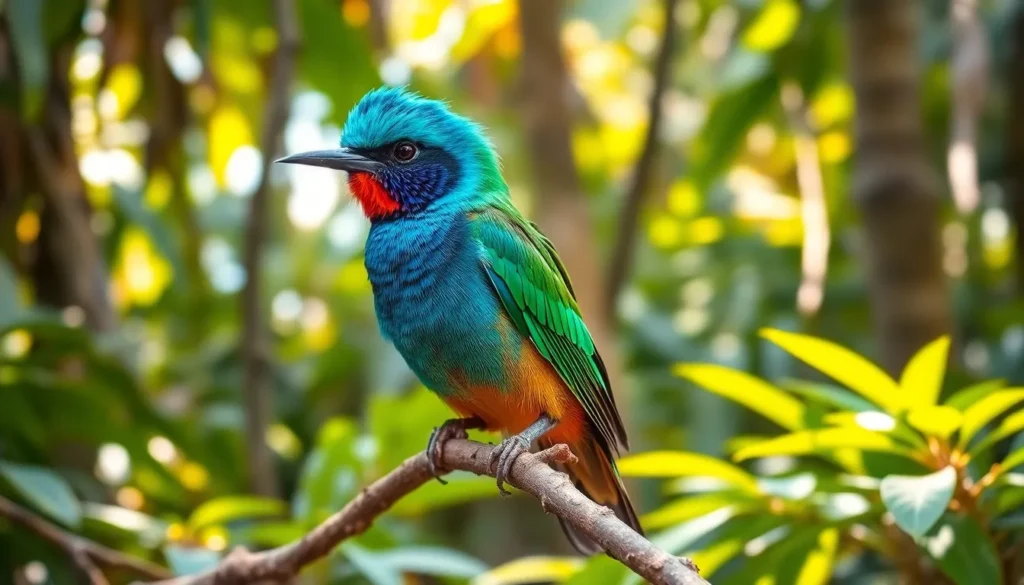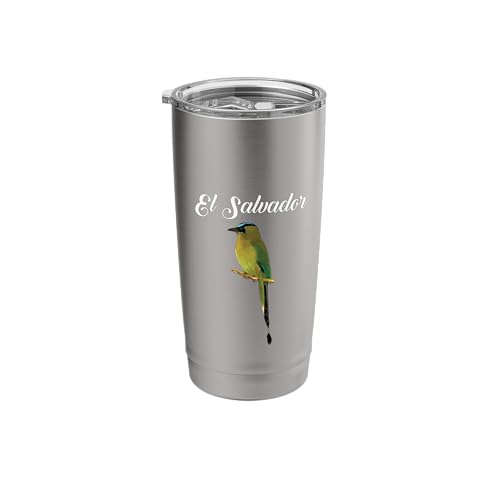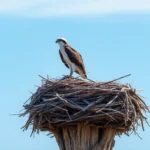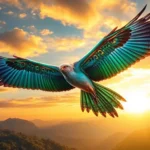When we think of El Salvador’s rich cultural heritage most of us immediately picture its stunning landscapes and vibrant traditions. But there’s one magnificent creature that truly embodies the nation’s spirit and freedom – the Torogoz or Turquoise-browed Motmot.
We’ve discovered that this extraordinary bird isn’t just beautiful with its brilliant blue and green plumage and distinctive racket-shaped tail feathers. It’s a symbol that represents the very soul of El Salvador. The Torogoz was officially declared the country’s national bird in 1999 and we can see why this decision resonated so deeply with Salvadorans everywhere.
What makes this designation even more fascinating is how perfectly the Torogoz reflects El Salvador’s commitment to preserving its natural heritage. We’re about to explore the captivating story behind this remarkable bird its unique characteristics and why it holds such a special place in Central American culture.
Meet the Torogoz: El Salvador’s National Bird
The Torogoz stands as one of Central America’s most striking avian species. We recognize this magnificent bird by its official scientific name Eumomota superciliosa, though locals throughout El Salvador know it simply as their beloved national symbol.
Physical characteristics make the Torogoz instantly recognizable across its native habitat. Brilliant turquoise eyebrows create the bird’s most distinctive feature, stretching from above each eye toward the back of its head. Green and blue feathers dominate the upper body, while russet and cinnamon tones color the chest and belly. Males and females display similar plumage patterns, reaching lengths between 13 to 15 inches from beak to tail.
Distinctive tail feathers set the Torogoz apart from other motmot species. Two elongated central tail feathers end in distinctive racket shaped tips, created when the birds preen away barb sections near the ends. These specialized feathers serve as pendulums during the bird’s characteristic tail wagging displays.
Behavioral patterns reveal the Torogoz’s solitary nature during most seasons. We observe these birds perching motionless on branches for extended periods, scanning for insects, small reptiles, and fruits. Their patient hunting style involves sudden darting movements to capture prey before returning to their perch.
Habitat preferences place the Torogoz in diverse Central American ecosystems. Dense forests, woodland edges, and coffee plantations provide ideal nesting locations throughout El Salvador, Guatemala, Honduras, Nicaragua, and Costa Rica. Elevation ranges from sea level to approximately 4,500 feet support healthy Torogoz populations.
Nesting habits demonstrate remarkable engineering skills among these national birds. Pairs excavate tunnel burrows extending 3 to 6 feet into earthen banks, cliff faces, or abandoned wells. Female Torogoz typically lay 3 to 4 glossy white eggs within these protected chambers during the dry season between February and July.
Cultural significance extends beyond El Salvador’s borders throughout indigenous Central American communities. Ancient Mayan civilizations revered motmots as symbols of earth’s connection to the underworld. Modern Salvadorans continue this reverence, featuring the Torogoz on currency, stamps, and official government emblems since its national bird designation in 1999.
Physical Characteristics and Identification
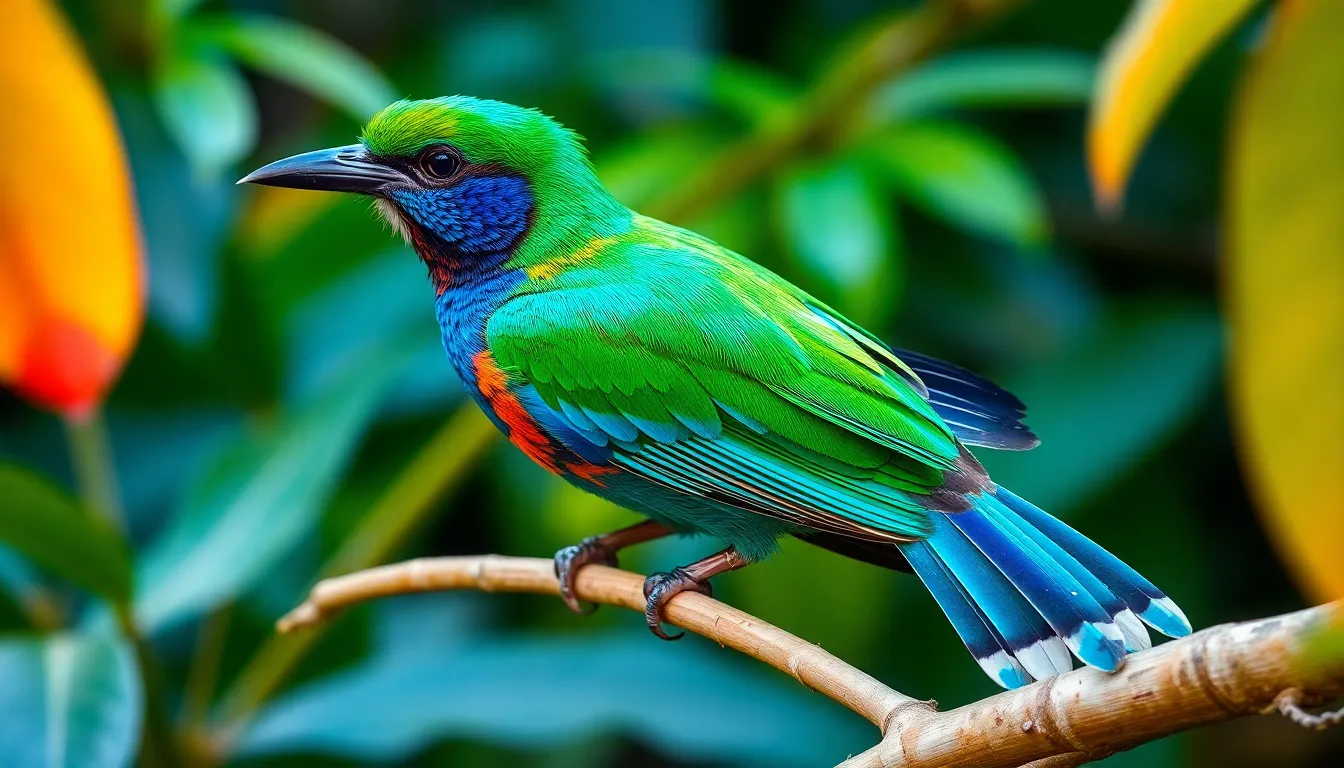
We can easily identify the Torogoz through its remarkable physical features that distinguish it from other Central American birds. These distinctive characteristics make the turquoise-browed motmot one of the most recognizable species in El Salvador’s diverse avian population.
Distinctive Blue and Green Plumage
Turquoise eyebrows create the most striking feature of El Salvador’s national bird, extending from above each eye in brilliant azure bands. Emerald green dominates the upper portions of the body, covering the back, wings, and crown with metallic sheens that shift in sunlight. Russet orange patches appear on the chest and belly, creating a vibrant contrast against the cooler tones. Black eye masks surround the dark eyes, extending backward toward the neck in distinctive lines that enhance the bird’s dramatic facial appearance.
Size and Body Structure
Adult Torogoz birds measure between 13 to 16 inches in length, making them medium-sized among motmot species. Weight ranges from 2.3 to 2.8 ounces, with males typically larger than females by approximately 10 percent. Sturdy builds characterize these birds, featuring robust bodies that support their active hunting lifestyle. Broad heads accommodate strong, slightly curved bills that measure roughly 1.5 inches long and prove ideal for catching insects, small reptiles, and fruits.
Unique Tail Features
Racket-shaped tail feathers represent the Torogoz’s most distinctive identification marker, created through a fascinating natural process. Two central tail feathers grow longer than the others, reaching up to 8 inches in length with bare shafts that end in oval-shaped vanes. Preening behavior removes the weaker barbs from exact sections of these feathers, leaving the characteristic “rackets” that flutter during flight. Pendulum-like movements of these specialized tail feathers serve as communication signals during courtship displays and territorial interactions.
Habitat and Geographic Distribution
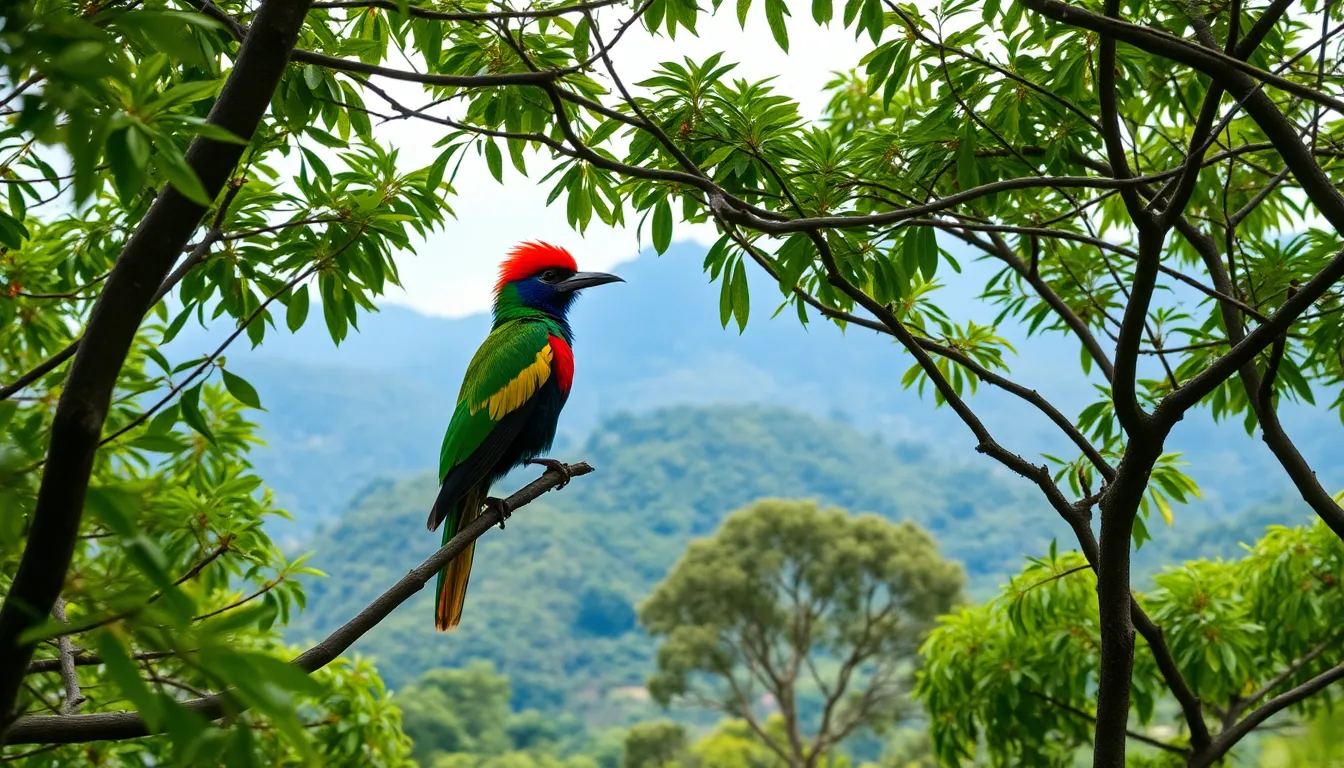
The Torogoz inhabits a broad range across Central America, with El Salvador representing the northern edge of its natural territory. We find these magnificent birds distributed from southern Mexico through Guatemala, Belize, Honduras, El Salvador, Nicaragua, Costa Rica, and Panama.
Natural Environment in El Salvador
We observe Torogoz populations thriving in El Salvador’s diverse ecosystems, particularly within dry forests and woodland areas. These birds prefer elevations between 500 to 1,200 meters above sea level, where they find optimal hunting conditions among the canopy layers.
Coffee plantations provide excellent habitat for Torogoz birds, as the shade trees create multilayered environments similar to natural forests. We document important populations in the mountainous regions of Ahuachapán and Santa Ana departments, where volcanic soils support rich biodiversity. Gallery forests along rivers offer additional habitat corridors, allowing Torogoz populations to move between fragmented forest patches.
The birds adapt well to secondary growth forests and woodland edges, though they avoid completely open areas. We notice Torogoz presence in protected areas like El Imposible National Park and Montecristo National Park, where conservation efforts maintain suitable habitat conditions.
Preferred Nesting Locations
We identify steep earthen banks and ravines as primary nesting sites for Torogoz pairs. These birds excavate horizontal tunnels measuring 1 to 1.5 meters deep into clay or soft soil embankments, creating secure chambers for their eggs.
Road cuts through hillsides provide artificial nesting opportunities that Torogoz readily accept. We observe active nests in riverbank erosion sites, where natural water flow creates vertical faces suitable for excavation. Abandoned quarries and construction sites with exposed soil walls also serve as alternative nesting locations.
Breeding pairs select sites with good drainage to prevent flooding during El Salvador’s rainy season from May through October. We find nest entrances typically positioned 2 to 4 meters above ground level, offering protection from terrestrial predators while remaining accessible for the parent birds’ daily flights.
Behavior and Diet
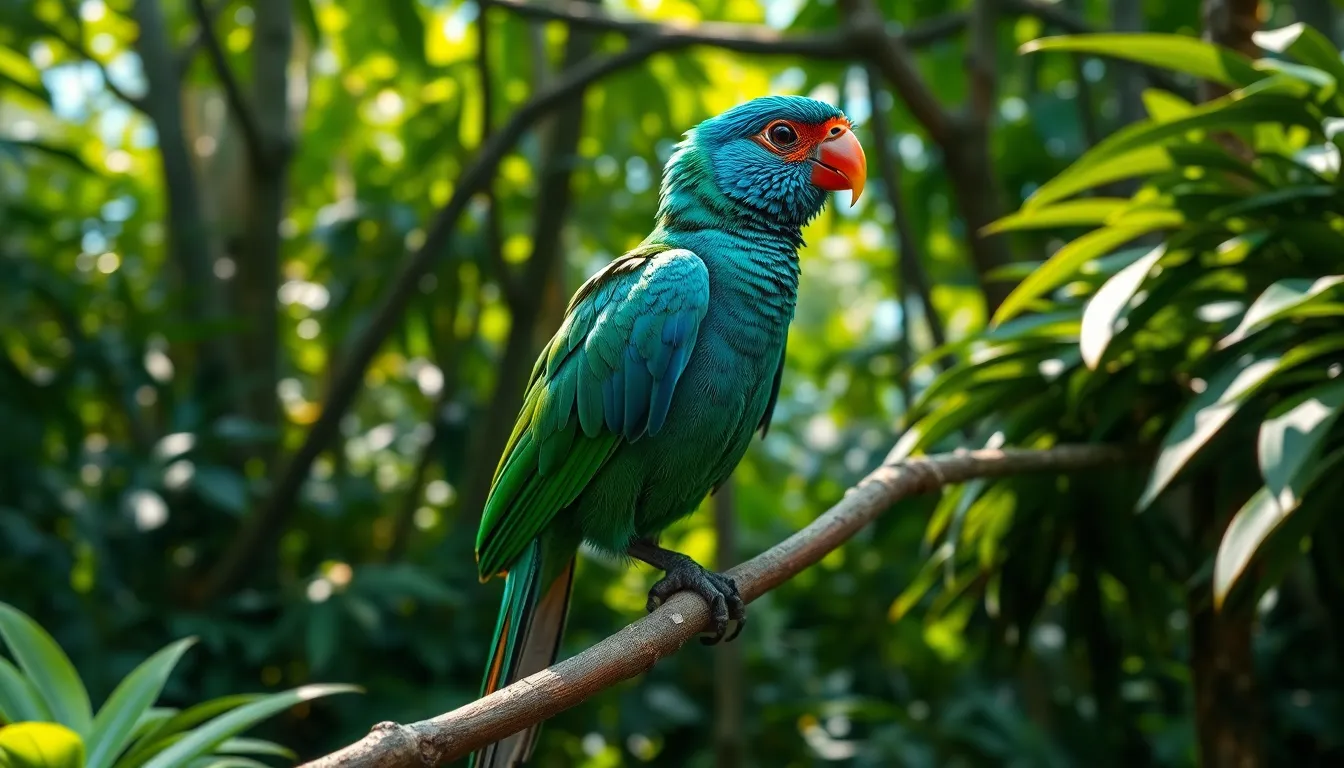
The Torogoz exhibits distinct behavioral patterns that reflect its adaptation to Central American ecosystems. We observe solitary hunting techniques combined with complex social behaviors during breeding seasons.
Feeding Habits and Prey
The Torogoz demonstrates exceptional hunting prowess through its sit-and-wait predatory strategy. We document these birds perching motionlessly on branches for extended periods before striking at prey with lightning-fast precision. Their diet consists primarily of insects including beetles, moths, caterpillars, and grasshoppers, which comprise approximately 80% of their nutritional intake.
Small vertebrates supplement the Torogoz’s insect-heavy diet significantly. We record observations of these birds capturing lizards, frogs, and occasionally small snakes through swift aerial maneuvers. The distinctive bill structure enables efficient prey manipulation, allowing the bird to beat larger insects against branches before consumption.
Seasonal feeding patterns vary considerably based on prey availability in different elevations. We note increased foraging activity during El Salvador’s dry season when insect populations concentrate near water sources. The Torogoz adapts its hunting schedule to coincide with peak insect activity periods, typically during early morning and late afternoon hours.
Mating and Reproduction Patterns
Breeding behaviors begin with elaborate courtship displays that showcase the male’s distinctive tail feathers. We observe males performing ritualistic dances while producing low, resonant calls that carry across forest canopies for distances exceeding 200 meters. These displays occur annually between March and July, coinciding with El Salvador’s transition from dry to wet season.
Pair bonding involves cooperative tunnel excavation in steep earthen banks or ravines. We document tunnel lengths ranging from 1 to 4 feet deep, with chamber dimensions measuring approximately 6 inches in diameter. Both partners participate in the excavation process, which requires 10 to 20 days of continuous digging activity.
The female deposits 3 to 4 glossy white eggs within the tunnel chamber on a bed of regurgitated insect remains. We record incubation periods lasting 17 to 20 days, with both parents alternating sitting duties throughout daylight hours. Nestling care extends 24 to 26 days after hatching, during which parents deliver prey items every 20 to 30 minutes during peak feeding periods.
Cultural Significance in El Salvador
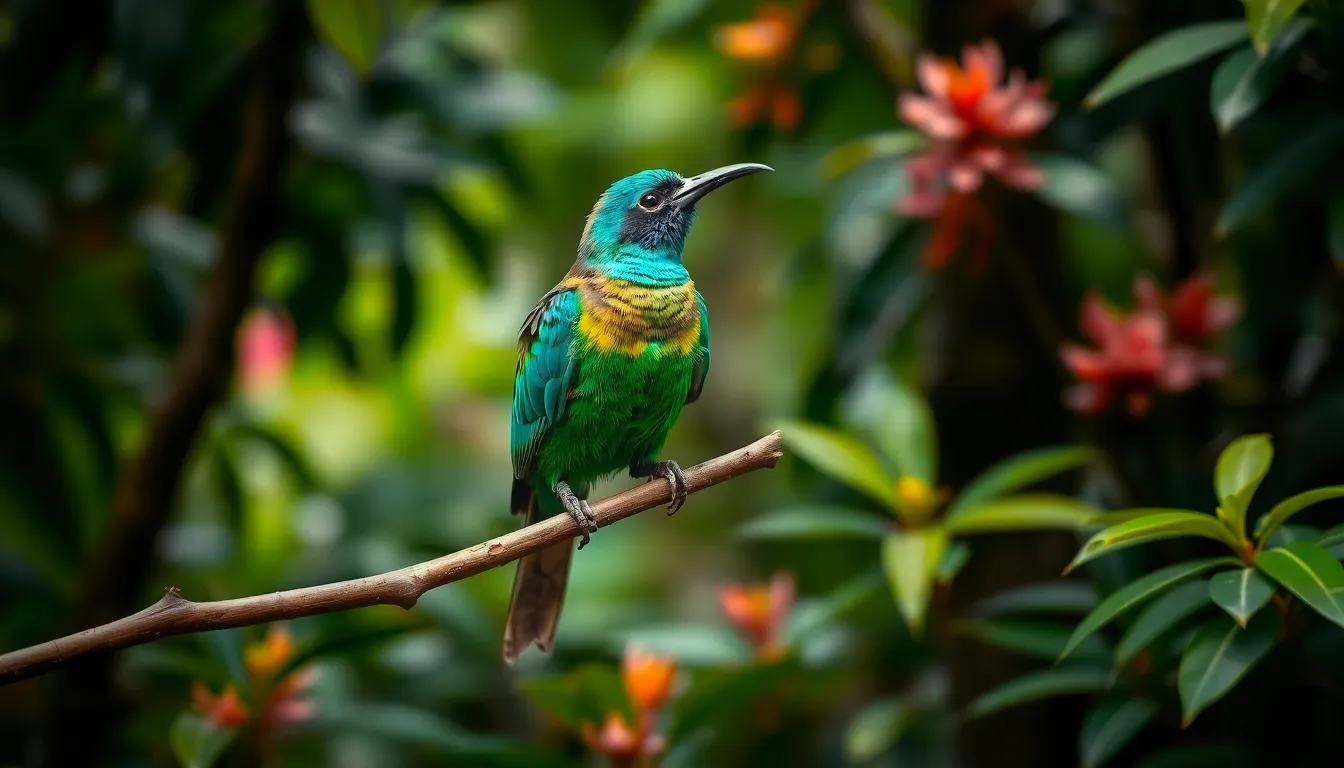
The Torogoz transcends its role as a mere bird species to embody El Salvador’s deepest cultural values and national pride. This remarkable motmot represents centuries of indigenous wisdom and contemporary Salvadoran identity.
Historical Importance to Indigenous Peoples
Ancient Mayan civilizations revered the Torogoz as a sacred messenger connecting the earthly area to the spiritual underworld. Pre-Columbian cultures across Central America incorporated the bird’s distinctive turquoise and green plumage into ceremonial artifacts and religious iconography. Indigenous communities believed the Torogoz possessed supernatural powers to communicate between different spiritual planes.
Traditional folklore describes the bird as a guardian of hidden treasures and sacred knowledge. Pipil and Lenca peoples incorporated Torogoz feathers into ritual headdresses worn by shamans and tribal leaders during important ceremonies. Archaeological evidence from sites like Joya de Cerén reveals pottery decorated with motmot motifs dating back over 1,400 years.
Indigenous naming conventions reflect the bird’s spiritual significance, with the word “torogoz” deriving from Nahuatl linguistic roots meaning “beautiful bird of the gods.” Ancestral hunting taboos protected these birds from harm, establishing conservation practices that modern El Salvador continues to honor.
Modern Symbolism and National Identity
El Salvador’s official adoption of the Torogoz as its national bird in 1999 strengthened the country’s connection to its natural heritage and cultural roots. The bird appears prominently on the 25-centavo coin, postage stamps, and government emblems throughout the nation. Tourism campaigns feature the Torogoz as a symbol of El Salvador’s biodiversity and environmental stewardship.
Educational curricula include Torogoz conservation lessons in primary and secondary schools, fostering environmental awareness among young Salvadorans. National parks display interpretive signs highlighting the bird’s cultural importance alongside its ecological role. Art galleries and museums showcase contemporary works incorporating Torogoz imagery in paintings, sculptures, and textile designs.
Sports teams and cultural organizations adopt the Torogoz name and image as emblems of Salvadoran pride and resilience. Coffee producers market premium beans using Torogoz branding to emphasize their commitment to sustainable agriculture practices that protect the bird’s habitat. International diplomatic missions display Torogoz artwork in embassy buildings to represent El Salvador’s unique cultural identity.
Conservation Status and Threats

The Torogoz faces mounting environmental pressures even though its iconic status in El Salvador. Habitat degradation and climate change present important challenges to maintaining stable populations throughout the country.
Current Population Challenges
Population monitoring reveals concerning trends across the Torogoz’s range in El Salvador. Forest fragmentation has reduced suitable nesting sites by approximately 35% over the past two decades. Agricultural expansion eliminates the dry forest ecosystems where these birds establish territories and hunt insects.
Climate variability affects prey availability patterns during critical breeding months from March to July. Extreme weather events disrupt insect populations that comprise 80% of the Torogoz’s diet. Coffee plantation intensification removes shade trees that provide essential hunting perches and nesting corridors.
Urban development pressures threaten traditional roosting areas in protected zones like El Imposible National Park. Pesticide use in agricultural areas contaminates the insect prey base that supports breeding pairs. Road construction destroys earthen banks where pairs excavate their characteristic tunnel nests.
Invasive plant species alter forest understory composition and reduce native insect diversity. Water source contamination impacts the wetland edges where Torogoz hunt small vertebrates like frogs and lizards. Human disturbance during nesting season causes abandonment of excavated tunnels before eggs hatch.
Protection Efforts and Initiatives
Government conservation programs target habitat preservation in key Torogoz breeding areas. The Ministry of Environment establishes buffer zones around existing tunnel colonies in riverbank locations. Protected area expansion includes corridor creation between fragmented forest patches.
Community education initiatives engage local farmers in bird-friendly agricultural practices. Coffee growers receive incentives for maintaining shade tree canopies that support Torogoz foraging behavior. School programs teach children to identify and report nesting sites for monitoring purposes.
| Conservation Initiative | Coverage Area | Implementation Year |
|---|---|---|
| Habitat Corridors | 2,500 hectares | 2019 |
| Coffee Shade Programs | 850 plantations | 2020 |
| Nesting Site Monitoring | 45 locations | 2018 |
| Community Education | 120 schools | 2021 |
Research partnerships with universities track breeding success rates and migration patterns. Citizen science projects engage birdwatchers in population surveys across different elevation zones. International cooperation agreements help range-wide conservation strategies with neighboring countries.
Restoration projects revegetate degraded areas with native plant species that attract insect prey. Artificial nesting bank construction provides alternative sites where natural earthen slopes have eroded. Pesticide reduction campaigns promote integrated pest management in agricultural zones.
Tourism development around Torogoz viewing sites generates economic incentives for habitat protection. Ecotourism guides receive training in bird identification and conservation messaging. Revenue sharing programs direct visitor fees toward local conservation projects.
Best Places to Spot the Torogoz in El Salvador

El Imposible National Park stands as our premier destination for observing the Torogoz in its natural habitat. This protected area encompasses 5,000 hectares of diverse ecosystems where these magnificent birds thrive at elevations between 500 to 1,200 meters. Established trails like Sendero Los Enganches and Sendero El Imposible offer excellent vantage points for spotting the turquoise-browed motmot during early morning hours.
Coffee plantations throughout our nation’s western highlands provide exceptional Torogoz viewing opportunities. Shade-grown coffee farms in Apaneca-Ilamatepec create multilayered environments that mirror natural forest conditions. We find these birds particularly active in plantations near Santa Ana Volcano where the canopy structure supports their preferred hunting grounds.
Cerro Verde National Park presents another outstanding location for encountering the national bird. Located at 2,030 meters elevation, this park’s cloud forest network attracts Torogoz populations seeking cooler temperatures and abundant insect prey. The park’s well-maintained trails enable visitors to observe these birds without disturbing their natural behaviors.
Walter Thilo Deininger National Park offers coastal viewing opportunities where Torogoz populations adapt to different environmental conditions. This 700-hectare reserve protects dry forest habitat that supports year-round resident populations. Early morning visits between 6:00 AM and 8:00 AM yield the highest success rates for sightings.
Our best viewing times occur during the dry season months of November through April when Torogoz activity increases significantly. Dawn and dusk periods provide optimal observation windows as these birds emerge from their roosts to hunt. Breeding season from March to July presents exceptional opportunities to witness courtship displays and territorial behaviors near nesting sites along riverbanks and steep earthen walls.
| Location | Elevation Range | Best Viewing Times | Key Features |
|---|---|---|---|
| El Imposible National Park | 500-1,200 meters | 6:00-8:00 AM | Protected trails, diverse ecosystems |
| Coffee Plantations (Apaneca) | 800-1,400 meters | 6:30-9:00 AM | Shade-grown canopy, natural habitat |
| Cerro Verde National Park | 2,030 meters | 7:00-9:00 AM | Cloud forest, cooler temperatures |
| Walter Thilo Deininger | Sea level-300 meters | 6:00-8:00 AM | Dry forest, coastal environment |
Conclusion
The Torogoz stands as more than just El Salvador’s national bird—it’s a living symbol that bridges ancient Mayan traditions with modern conservation efforts. We’ve seen how this remarkable species continues to inspire pride and environmental stewardship throughout the country.
From its engineering prowess in tunnel excavation to its role in sustainable ecotourism, the Turquoise-browed Motmot demonstrates nature’s incredible adaptability. The ongoing protection initiatives across El Salvador’s national parks and coffee plantations show promising signs for the species’ future.
As we move forward, the Torogoz reminds us that preserving our natural heritage requires collective action. Every conservation effort—whether through habitat protection or educational programs—helps ensure that future generations will witness this magnificent bird’s turquoise brilliance in the wild.
Frequently Asked Questions
What is the Torogoz and why is it important to El Salvador?
The Torogoz, also known as the Turquoise-browed Motmot, is El Salvador’s national bird designated in 1999. This stunning bird symbolizes the country’s cultural heritage and natural pride. With its brilliant turquoise eyebrows and distinctive plumage, the Torogoz holds deep significance for Salvadorans and represents their connection to both ancient Mayan traditions and modern environmental stewardship.
What does the Torogoz look like?
The Torogoz is easily recognizable by its striking turquoise eyebrows, blue and green plumage, and russet orange chest patches. Adult birds measure 13-16 inches in length with robust bodies suited for hunting. Their most distinctive feature is their racket-shaped tail feathers, which are longer in the center and flutter during flight, serving as important communication signals during courtship displays.
Where can I find the Torogoz in El Salvador?
The best places to spot the Torogoz include El Imposible National Park, coffee plantations in the western highlands, Cerro Verde National Park, and Walter Thilo Deininger National Park. These birds prefer elevations between 500-1,200 meters and thrive in dry forests and multilayered environments. Early morning during the dry season offers optimal viewing opportunities.
What does the Torogoz eat and how does it hunt?
The Torogoz employs a sit-and-wait hunting strategy, with insects making up about 80% of its diet, including beetles, moths, and grasshoppers. It also captures small vertebrates like lizards and frogs. The bird is solitary when hunting but becomes more social during breeding season, with increased activity during the dry season when prey is more abundant.
How does the Torogoz reproduce and nest?
Torogoz pairs engage in elaborate courtship displays from March to July. They cooperatively excavate tunnel burrows in steep earthen banks and ravines for nesting. The female lays 3-4 eggs, and both parents share incubation duties and care for nestlings. Their remarkable engineering skills allow them to create secure nesting sites in various environments.
What cultural significance does the Torogoz have?
The Torogoz holds profound cultural importance dating back to ancient Mayan civilizations, who revered it as a sacred messenger connecting earthly and spiritual realms. Its feathers were used in ceremonial artifacts and ritual headdresses. Today, it appears on currency, stamps, and official emblems, representing Salvadoran national identity and environmental stewardship in modern culture.
What threats does the Torogoz face?
The Torogoz faces significant challenges from habitat degradation, forest fragmentation, agricultural expansion, and urban development. Climate change also affects prey availability and suitable nesting sites. These threats have reduced populations and highlighted the need for comprehensive conservation efforts to protect this iconic species and its natural habitat.
What conservation efforts protect the Torogoz?
El Salvador implements various protection initiatives including government conservation programs for habitat preservation, community education promoting bird-friendly agricultural practices, and restoration projects for degraded areas. Ecotourism generates economic incentives for habitat protection, while collaborative efforts between organizations and communities work to ensure the Torogoz’s long-term survival.

